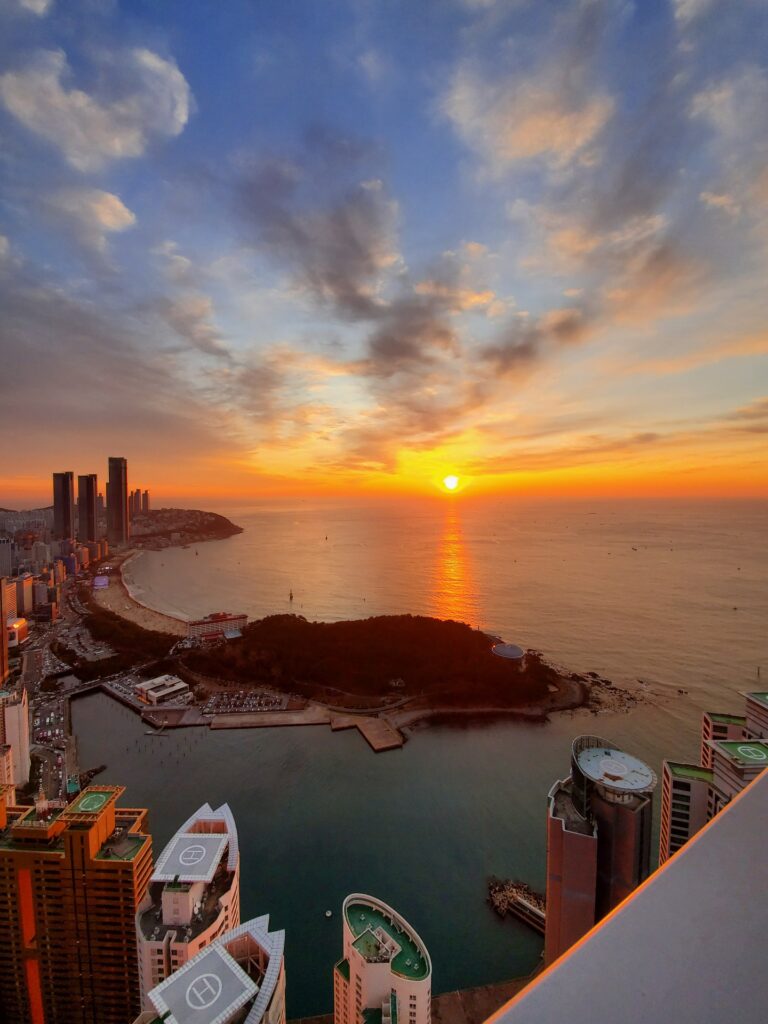Overview
The “summer capital of Korea”, Busan feels similar to San Francisco with its colorful hillside houses, famous beaches, and international hub of commerce (5th largest port in the world). This city lies on the southeast tip of the Korean peninsula just 50 km from Fukuoka Japan (3 hours by hydrofoil). As the second largest city in the country it has 3.6 million people and 15 districts which is just a fraction of Seoul’s size. With 6 subway lines integrated with the bus system it’s easy to navigate the urban centers and you can ride the KTX (or newer SRT train) to Seoul in about 2.5 hours. You can also fly between many Asian countries through Gimpo International Airport. While the city is quite humid especially in the rainy typhoon season, it never gets too hot or cold due to the ocean effect. With such a dynamic mix of geography and commerce, it’s no wonder Busan has become an international hub for foreigners.
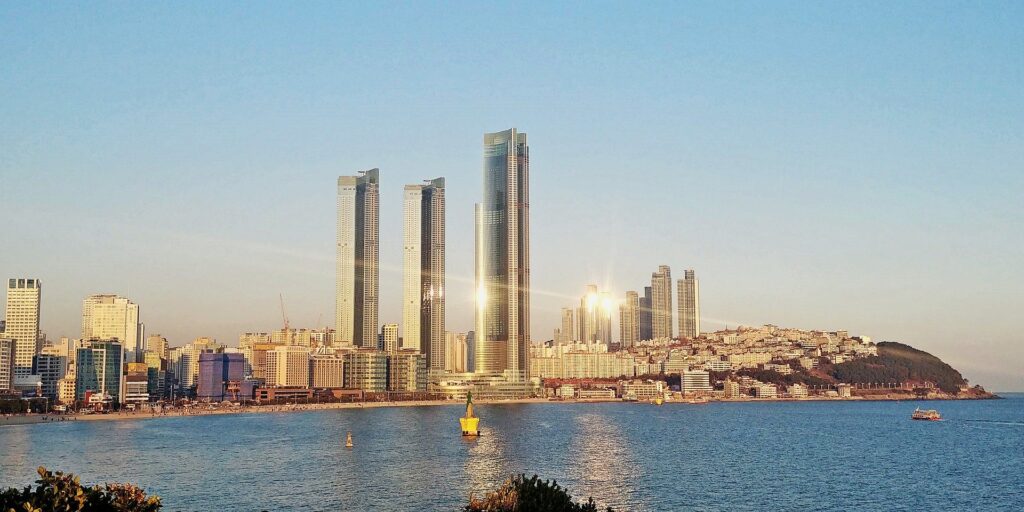

Nature
Busan features a harmonious blend of rivers, mountains, and sea. It’s enclosed by mountains on the north and west, and seas on the south and east, and adjacent to the mighty Nakdong River delta. There are 6 main beaches located around the city. The largest and most popular beach is Haeundae which has gorgeous wide views. While it gets crowded at times, it’s still a fantastic place to stroll or relax and take in the local shopping, restaurants, breweries or dip in the famous hot springs. Just a short hike away along scenic cliff walkways is Haedong Yonggungsa Temple (pictured at top) which has a great ocean view and eclectic architecture. A bit less crowded is Gwangalli Beach. It has a nice long boardwalk and a great view of the iconic lighted Gwangan Bridge.
Another must-see is Taejongdae Resort Park. You can hike up or ride a short train to the observatory and walk around forested paths looking over cliffs with sea caves and unique rock formations. Take in the view of Yeongdo Island and ride a short boat back to your destination to ride the ocean. If you’re into hiking, Geumjeongsan is a great place to get wide views of the city.


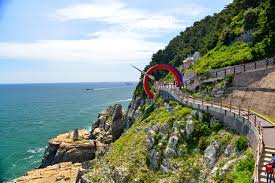
Urban Life
Busan has many urban centers which are well worth checking out. To get an overview, start at Busan Tower (120m / 69m above sea level) located in Yongdusan Park and take in the panoramic view overlooking downtown Busan and nearby islands. From there you’ll want to venture through Jagalchi Fish Market located at Busan Harbor and take in the bustle and smells of the largest fish market in Korea. If you’re bold you can order some curious raw fish from a Korean “ajumma” (lady) and have it prepared to eat right there.
Another fun place to wander around is the maze of alley streets in Nampo-dong International Market. There you’ll find all kinds of goods and things to eat and a fun used book store alley just up the street. For those interested in history, ascend the 40 Step Stairway which is a memorial to Korean War refugees. Another interesting walking tour is Gamcheon Culture Village. It’s composed of multicolor houses and tiny mural streets with steep stairways and public sculptures. You’ll find arts and crafts stores and novel cafes with nice views of the city.
There are many other areas which can be easily accessed on the subway lines. Seomyeon is a central shopping and entertainment district, and is near the city’s largest traditional market, Bujeon Market. The industrial complex known as Centum City is a popular new shopping area with luxury department stores.
Dongnae-gu is also worth a visit. There you’ll find a mix of upscale and traditional culture, with restaurants, clubs, and shopping, as well as Asia’s largest hot spring spa (Heosimcheong Spa). Be sure to try the local green onion pancake (pajeon) which goes down well with white rice wine (makgeolli). To experience the nightlife, check out the areas around Pukyong National University and Kyungsung University where you’ll find good eats and drinks.
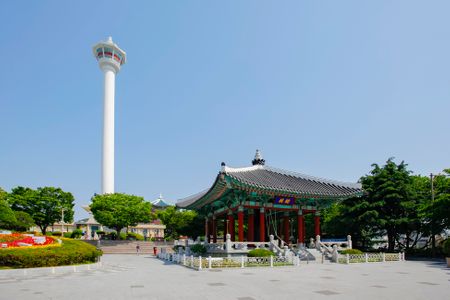
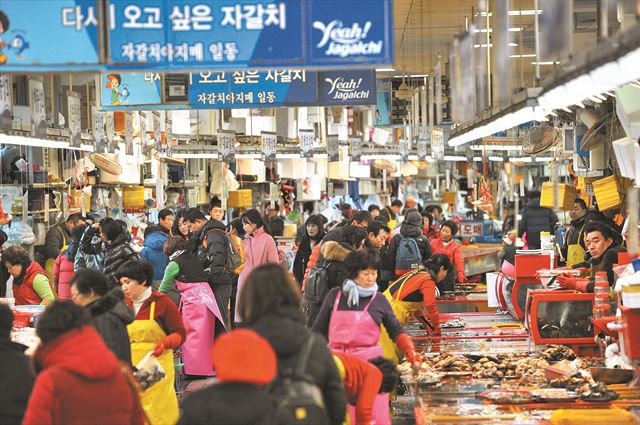
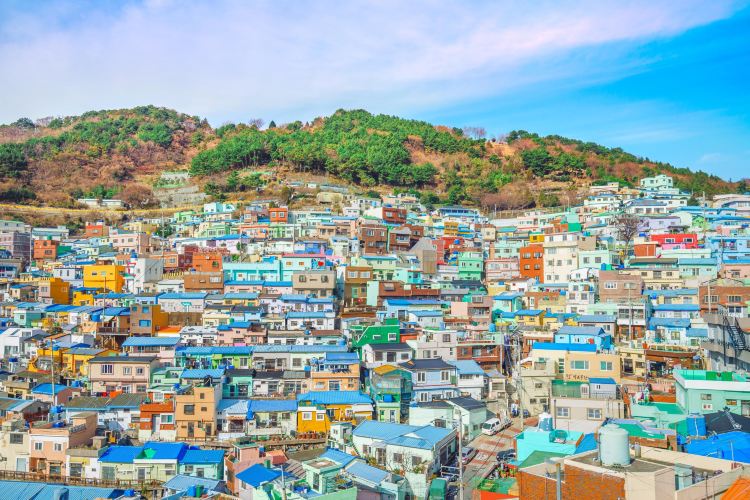
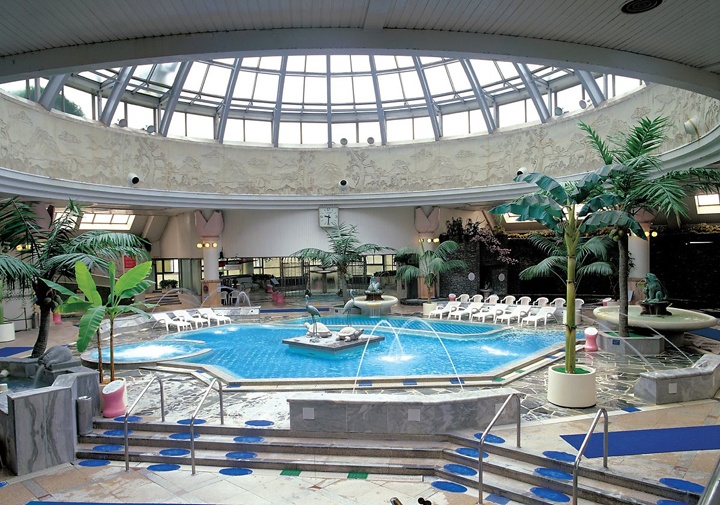
Events
Busan is a major center for maritime research and economic development in the region and has hosted Asian economic summits and international sporting events. One of the celebrated annual events is Busan International Film Festival, which is among the largest of its kind and the oldest in Korea (currently the 25th year). During the weeklong festival, many large movie theaters join together to screen a wide variety of independent films especially designed to promote new artists. You can easily mingle with directors and actors in QnA sessions and check out music and other events happening.
If you’re into K-pop check out Busan One Asia Festival (BOF) which features some of the largest names like BTS as well as trending EDM and hip-hop favorites. There are many other music and dance festival competitions which bring new talent on the stage and are great to watch. Depending on the season you’ll also find flower festivals and nice fall foliage to take in. The stunning visuals of the lantern and fireworks festivals are also worthwhile shows.
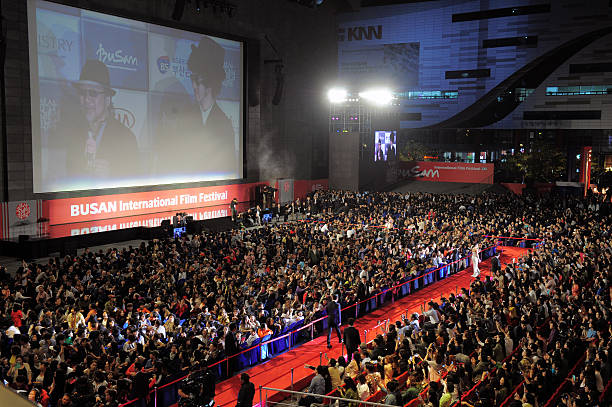
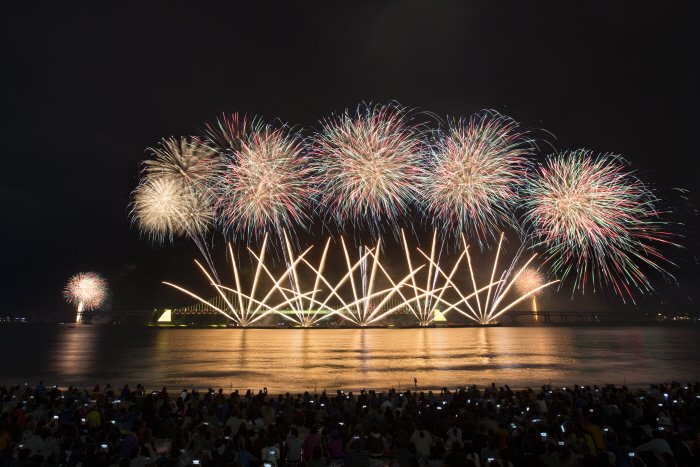
Summary
While Seoul may be a first choice for many teachers coming to visit or stay in Korea, Busan is a close second owing to its many attractive qualities. You’ll find all kinds of outdoor activities from relaxing at the beach to getting a mountain workout and lots of hidden gems to explore. There’s a rich history in the city in its proximity to Japan and based on its unique role in the Korean War. Thanks to the vibrant international expat community you’ll have no problem finding all kinds of clubs to join as well. It’s also a great starting place to journey along the southern coast and islands on the peninsula or catch a long ferry to Jeju Island for a vacation.
